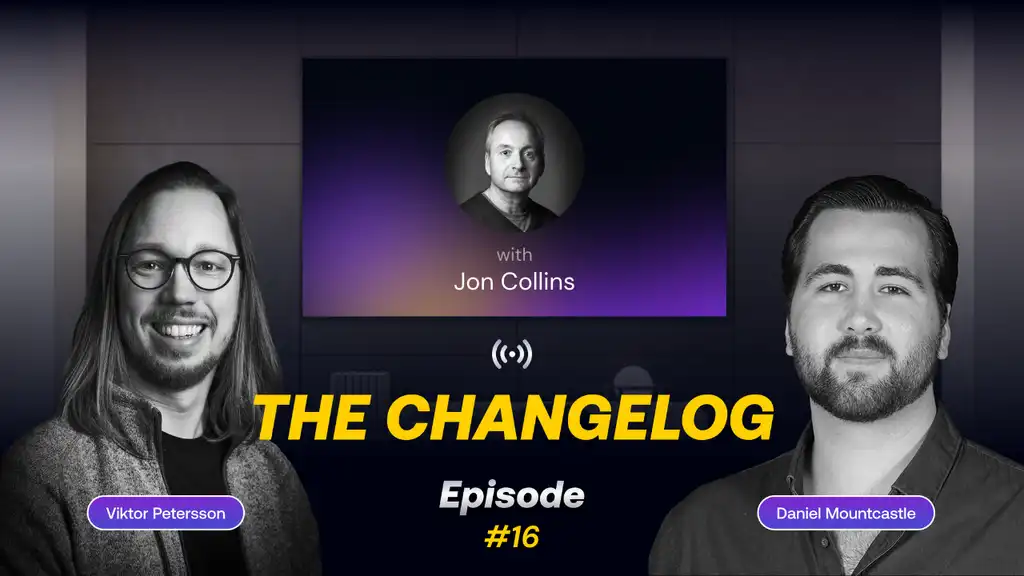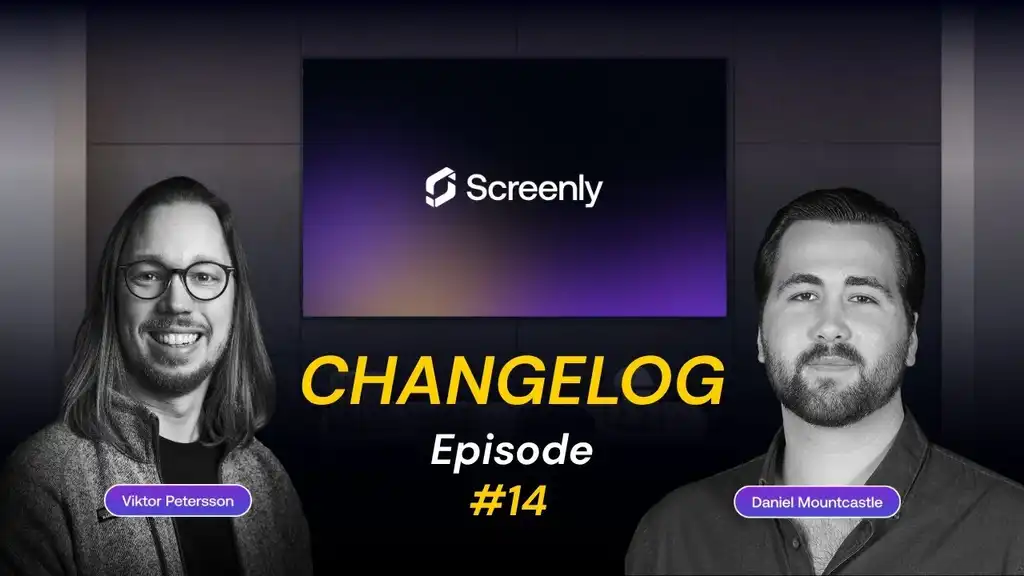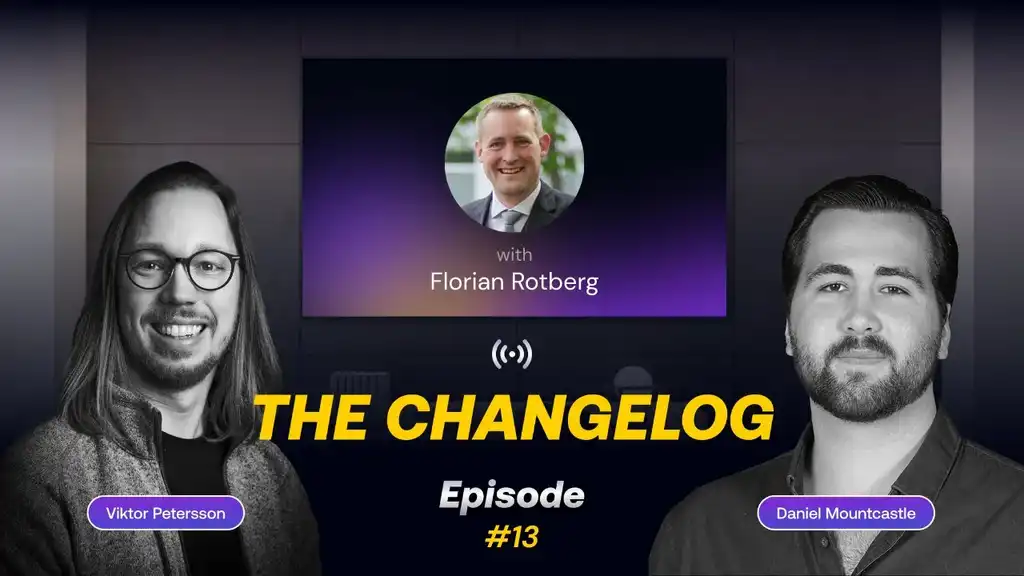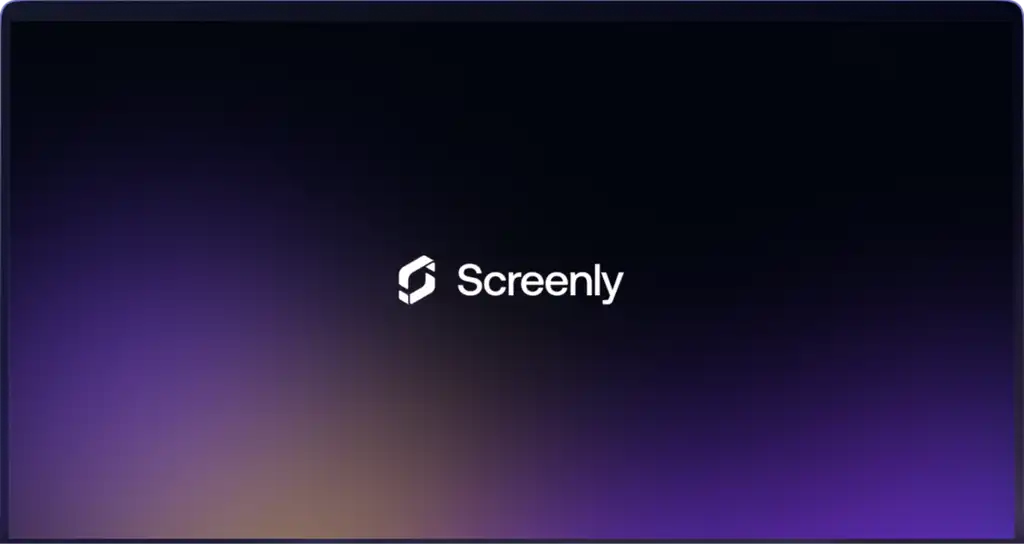Listen to this episode on:
Screenly Changelog Episode 15: The Future Was Yesterday: Security, Simplicity and the Real Cost of Digital Signage With Deacon Wardlow of Vantage LED
Digital signage is more than a screen on a wall. It is a living system made up of people, hardware, and the habits that connect them.
In Episode 15 of The Screenly Changelog, hosts Viktor Petersson and Daniel Mountcastle talk with Deacon Wardlow, Director of Strategic Initiatives at Vantage LED and founder of Spectacular Media, about how far the industry has come and what it takes to build something that lasts.
Their conversation moves from the early days of experimentation to the realities of keeping networks secure, reliable, and meaningful today. It is a story about how innovation grows through consistency, discipline, and smart use of technology rather than chasing the next big trend.
From Duct Tape to Data
The conversation begins with a look back at how digital signage found its footing. In the early 2000s, outdoor displays were mostly experiments. Integrators were making things work with spare parts, off-the-shelf components, and whatever tools they could find.
That period of trial and error, Deacon recalls, shaped the mindset that still drives much of the industry. Those who learned to solve problems creatively back then are the ones building the most resilient systems today. What started as improvisation has evolved into thoughtful, data-driven design that still carries the same spirit of adaptability.
The Hidden Cost of Cheap Screens
Viktor points out that many companies still misunderstand what professional signage requires. Too often, teams treat it as a one-time purchase instead of a living system that needs care and maintenance.
He explains that while using a consumer TV may seem cheaper at first, it rarely lasts. Heat, glare, and usage wear them down quickly, creating hidden costs in downtime and replacement.
Deacon adds that performance is not about resolution or brightness alone. What matters most is visibility and consistency in real-world conditions. A well-designed screen that stays clear and legible in any environment will always outperform a more expensive but poorly chosen display.
Both agree that good signage is an investment, not a quick purchase. It requires planning for long-term stability and budgeting for updates and support along the way.
Security Is a Culture, Not a Checkbox
Every display connected to the internet is part of a network, and every network has vulnerabilities. The group discusses how the industry still struggles with this reality.
Deacon shares that many systems get compromised not by complex attacks but by simple oversights such as weak passwords, outdated software, or unsecured remote access tools. These small gaps can turn a display into a gateway for far bigger issues inside an organization.
Viktor emphasizes that at Screenly, security is not an optional feature but a foundation. Being secure by default means thinking about protection from the start, not as an afterthought. Daniel adds that human error is just as common as software failure. Sometimes all it takes is someone unplugging a network cable or misconfiguring a player for things to go offline.
True security is not about ticking boxes. It is about awareness, communication, and shared responsibility across the entire organization.
Designing for People
Daniel brings the focus back to usability. Technology only works when people can use it effectively. He explains that the most reliable systems are the ones designed with people in mind.
Features like clear dashboards, automated restarts, and straightforward content tools reduce friction and prevent small mistakes from turning into major disruptions. When users feel comfortable managing their displays, the technology blends into their workflow instead of getting in the way.
For the Screenly team, designing for simplicity is not just about making things easier. It is about making them better. The more accessible the tools are, the more they get used, and the more value they deliver.
The Future Was Yesterday
When asked about his thoughts on where the industry is heading next, Deacon explains that the future of digital signage is not about waiting for the next big breakthrough. It is about learning to make better use of what already exists.
He describes how technologies like artificial intelligence can already enhance maintenance, automate content management, and predict system issues before they happen. The challenge is not about inventing something new but applying what we have in smarter, more meaningful ways.
Deacon calls this idea “The Future Was Yesterday”. It is a reminder that progress depends on how we choose to use the tools available to us today. Viktor agrees, adding that technology alone is never enough. Vision, planning, and maintenance are what keep systems sustainable over time.
The message is clear. The future is not something to wait for. It is something to build deliberately, one good decision at a time.
Building What Lasts
The goal of great digital signage is not just to display information but to create reliability, trust, and continuity. At Screenly, that means building products that are secure, scalable, and simple. It also means thinking about sustainability from the start. Long-term success in signage does not come from flashy features or cutting-edge specs. It comes from a mindset of care, education, and consistency.
Technology will always change, but the core values behind great systems remain the same: clarity, resilience, and purpose.
Watch the full conversation with Viktor, Daniel, and Deacon in The Screenly Changelog Episode 15. Learn how to build signage that works today and continues to deliver value for years to come.
Learn more and get started with Screenly
Interested in secure, scalable digital signage solutions? Explore Screenly and start your 14-day free trial today.
Stay tuned for future updates, and thank you for joining us for the Screenly Changelog Episode 15!




